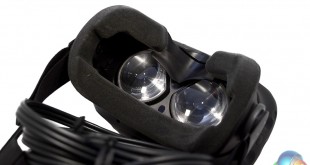
The HTC Vive has proved to be quite a formidable piece of kit. Not only did it surprise when it stole much of Oculus' pre-release thunder with roomscale and hand tracked controllers, but it surprised post launch by being more widely available.
Where it does not surprise us though is in the quality of its virtual reality. We got our first glimpse at its potential with the Vive Pre sent to us by HTC a few months ago. Today's review sample is not a ‘Pre' though, nor a devkit. This is the real, CV1 Vive, complete with new packaging, a newly designed head strap and a lot more content to play with.
The HTC Vive works a little differently than the Oculus Rift. Instead of a single tracking camera, it uses two laser-based Lighthouse stations. It also does away with the gamepad and puts instead a pair of motion tracked wand controllers in your hands – think of them as much more accurate and capable Wiimotes.
All of that means that the Vive is designed to operate in a larger space, letting you walk around and interact in very natural ways. Because of these differences, we could go ahead and compare it to the Rift, but we will save that for another day. This review, is all about whether the HTC Vive is worth its weighty £700 price tag.
- Display type: OLED.
- Resolution: Two 1,080 x 1,200 displays.
- Refresh rate: 90Hz.
- Field of view: 110 degrees.
- Tracking: Dual Lighthouse stations, 15 x 15ft roomscale area.
- Controllers: Dual hand-tracked wands.
- Extra features: Front facing camera, chaperone.
Compared with the Vive Pre packaging, it is immediate from the outset that HTC has upped the game for the commercial release. This might not have a neat little carry case like the Rift, but this is a big, professional looking box, with a neat, unified colour scheme and an exciting lack of anything on the exterior.
It is also very well cushioned and ships in its own big, padded, cardboard box. Although we have seen a few sad examples of couriers with no regard for their customer's packages, it seems like you would have to work pretty hard to ship the Vive to anyone in a damaged state.
Inside the main box are a number of smaller boxes, each fitted with one major component of the system. Those little boxes can be removed separately and are padded with thick foam and more cardboard.
Each bag of accessories or cables is wrapped in a really classy frosted plastic bag. It adds an air of mystery and sophistication to the whole thing which is a nice touch.
There are a couple of smaller set up manuals inside, but the first one you come across is this single, big sheet. It details in a number of languages how you should set up you room and then just run the installer.
Indeed the software set up has a number of helpful tips to get you started, so it may well be that that is all you need.
The wand controllers for the Vive are unique. They feature a long handle for grasping and what is perhaps best described as a ring doughnut at the other end.
That doughnut is covered in infrared sensors, which when picked up by the Lighthouse lasers pinpoint the location of your hands and what you are doing at the time. They coat the exterior and interior of that tracking puck, with the hollow centre allowing even better coverage by the base stations.
Inputs are handled by buttons, though not necessarily the traditional types you may be aware of. There are a pair of grip buttons on the sides, which provide a number of functions in VR, but perhaps most of all in instances where you need to firmly grasp something.
The underside features a trigger mechanism, most often used in games with guns in them and a trackpad. That allows for navigation, but is also clickable much like a traditional D-Pad.
There are two other buttons, one above and one below the trackpad. The former acts as an in-game menu button, pulling up volume controls, restart and quit functions, while the other opens up the Steam VR overlay and menu system.
Each controller is also fitted with a wrist strap at the base to prevent it flying out of your hand and into your TV, as oh so many Wii motes did in the middle of the '00s.
The only accessories that come with the Vive wand controllers are a pair of USB chargers with micro-USB to USB cables. These are for charging the controllers or connecting them up to your PC for firmware updates.
One of the biggest selling points of HTC's Vive is its ability to operate on what is called a “room scale,” basis. That essentially means you can walk around your space, rather than staying seated or standing in one spot, as per the Oculus Rift.
To make this possible though, it has to utilise quite a different system for tracking. Instead of a single infrared camera, Valve/HTC used these twin Lighthouse stations, which send out infrared laser pulses and a sweeping laser. While you do not see any of that, if you had some form of infrared vision, it would likely look a little like this.
The stations themselves are small, near-cube shaped boxes, that measure around 3.5 inches long and two inches deep, and feature a matt black exterior, save for the glossy, transparent front.
The rear and underside both have screw mounts for attaching the units to your wall or tripod and there are a number of connectors there also. There is a power plug, a micro-USB connector for firmware updates, a 3.5mm sync cable connector and a button for changing the “channel,” which is an important step during set up.
Along with the base stations, you also get a pair of power cables and a very long 3.5mm sync cable, which is designed to aid those who have trouble synchronising the base stations – say if their line of sight to one another is impeded by a large light fixture or similar.
Located in their own pack, are a pair of wall-mounts, complete with screws, raw plugs and a set up manual which takes you through the process of mounting each of the stations.
The HTC Vive headset itself, is a little strange looking, with its solid-black exterior and mottled surface. The Vive uses a hard plastic shell much more like the developer kits we have looked at in the past, but its pitted and dotted surface gives it a bit of a ‘fly eye' look.
There are no real visual differences from the HTC Vive Pre we took a look at a couple of months ago, but the head-strap has had a minor redesign for improved comfort and grip.
Those indents are infrared sensors, that pick up the laser pulses and passes from the Lighthouse base stations and let your PC know just where you are in your real space, so it can accurately recreate that in the digital one. The sensors extend across the front, around the sides and due to the angling are even partially visible from behind.
With the opposite placement of Lighthouse sensors this should mean that losing headset tracking should be very rare indeed.
Another unique aspect of the Vive is its front facing camera. While the developer kit versions had a pair of twin cameras in a stereo configuration, the consumer release makes do with one. However it does give you a window to the outside world and can offer a Tron-like Chaperone system if needed.
Much like the Oculus Rift's slider for adjusting interpupillary distance (IPD) – the Vive has its own method, though it is a small twist knob instead. This widens and shortens the distance between the lenses, letting you find the perfect spot for your size and shape of face.
To help fit the Vive itself to your face, there are a number of adjustments you can make. The side straps feature Velcro to let you tweak how tight the overall design is on your head, while the top-mounted Velcro strap can similarly be adjusted to manage whereabouts on the back of your head that the weight of the headset is distributed.
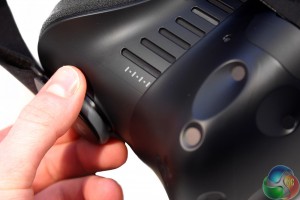
The two “Vive” logo-covered side knobs have a part to play too. If pulled out and rotated, they control the distance between the lenses and your eyes. The closer they are, the better field of view you have, but this makes for a quick adjustment for those with glasses or particularly long eyelashes.
Looking inside the headset itself, there is a foam face plate that runs around the exterior. This provides comfortable padding for when using the headset and prevents light bleed around the edge. It has rounded edges, so there should be no scratching and it can be removed if you wish to fit an alternative, or the thinner-face version that also comes bundled with the headset.
Nestled inside the headset we have the two near-circular lenses that make all of the magic happen. These are fresnel design, with obvious concentric circles typical of that. HTC/Valve opted for less bespoke lenses here than we saw on the Rift, so it will be interesting to see what effect that has.
Moving around the back of the headset, we have the adjusted head strap. It now features a design that better cups the back of your head, making mounting easier and should improve weight distribution.
The cables for the Vive are multitudinous, thick and long. Measuring in at 15ft, to give you plenty of room to move around, they are surprisingly thick and heavy. However they are durable, which is good, because chances are you are going to stand on them at some point.
Despite the number of cables though, they are all wrapped together, easily labelled, fitted with a sturdy rubber coating and feature yellow tipped headers, which as well as making them easier to distinguish adds a nice bit of visual flair.
In total, the Vive connects a USB, HDMI and power cable up to its link box, with a 3.5mm audio jack for attaching headphones.
Along with the headset itself, there are a number of accessories:
- Link box and appropriate cables.
- Warranty information leaflets.
- A pair of micro-fibre cloths.
- Replacement (thin) face plate padding.
- Power cable.
- A pair of in-ear earbud headphones.
Do you have a narrow face?
Testing the HTC Vive was conducted in much the same way I did with the Oculus Rift. I used the Vive for many, many hours over the course of several weeks, trying a number of roomscale, seated and standing games, as well as non-interactive experiences and 360 videos.
Throughout testing I noted my thoughts on various aspects of the headset, including its display and optics, the comfort and fit of the headset itself, its tracking capabilities, controller inputs, software platform and the quality of the experiences and games available for it.
Get ready for some big house snobbery. Roomscale is going to be the new ‘master race'
During testing I used a 2m x 1.5m space (the smallest recommended) as well as a larger one in a more communal area to test the differences.
The full list of games and experiences used for this review were as follows:
Non-Interactive movies and experiences
- The Blu
- Invasion.
- Lost.
- Henry.
- Google Spotlight Story: Pearl
- Total War: Warhammer 360 degree trailer.
Interactive experiences
- Big Screen.
- Steam VR Theatre.
- AltSpace.
- TiltBrush.
- Farlands.
Games
- Space Pirate Trainer.
- Portal VR.
- The Lab.
- Job simulator.
- Vanishing Realms.
- Surgeon Simulator.
- Fated.
- Cloudlands.
- Project Cars.
- Zenblade.
- Waltz of the wizard.
- Brookhaven Wxperiment demo.
- Budget Cuts demo.
- Hover Junkers.
- Time Machine VR.
- Call of the Starseed: The Gallery
- Skeet – target shooting.
- Felt tip circus.
- Audioshield.
- Windlands.
- Hordez.
- Elite Dangerous.
- Chronos.
- Blaze Rush.
- Elite Dangerous.
This is obviously not an exhaustive list of every VR game you can currently play with on the Vive, but there is only so much time we can spend on this review. If there are any particular games or experiences you would like me to try, let me know and I will do my best to take a shot at it.
What about the Oculus Rift?
As with the Oculus Rift review and the “what about the Vive?” questions I expected were not far away, this review is a standalone review. While I may make the odd comparison with the Oculus Rift, I will do my best to avoid them, as I want this to be a review based on the merits of the Vive itself, and not a “which is best?” argument. We will save that for another day.
Once I have completed both full, standalone reviews I will put together another piece that lines the two major headsets up against one another and we will see which comes out on top.
The Physical Headset
The HTC Vive headset is a pretty well put together piece of kit. It is sturdy and robust – I have hit it into the wall a couple of times, so can speak from experience – and it has enough give where it needs to to allow a comfortable fit when adjusting.
It is quite a chunky piece of kit. Google Glass this is not, you will know when you are wearing it and it protrudes a good few inches from your face, so you may find yourself bumping the controllers into it at times, while you get used to the new depth of your own face!
The strap system are good, letting you adjust the fit of the overhead and side straps via velcro and elastic. The head-band fits comfortably over your head and helps funnel the cables to your back, where they are mostly unobtrusive.
You can also adjust while the headset is on, which makes things easy, though the top-strap does occasionally get stuck under the cables which can take a bit of fiddling. A second pair of hands may be useful for the first set up, but it is not necessary.
As great as Vanishing realms is, looking down to access your inventory is annoying
The weighting (550g) is good, but not great. Even if you have it fitted just right with the head strap on your rear-head ridge and the straps tightened on the side properly, it is still a bit too front loaded. This does not manifest itself very often, but if you ever play a game where there is a requirement to look down, you will find the headset slipping ‘upwards' on your face.
This causes some problems beyond fitting, which we will address more in the optics section.
It is easy to adjust distance between your eyes and lenses, using the side-strap controls. Pulling the knobs away from the frame and twisting them gives you a manual control, a little like the Oculus Rift DK2 headset. Interpuppilary distance is easily controlled with the scroll knob, with an on-screen display popping up to help you adjust it to a specific number.
The headphones that come with the Vive are earbuds that hook up to the 3.5mm connector off-of the main cable strip. These ones have a shorter cable than the Vive Pre's bundled set, which was a good choice. However as with the Pre's I struggled at times to keep them in my ears during rigorous play. Quality wise they were great, but I have always had difficulty with in-ear earbuds, so would recommend a wireless over the ear set if you have it, instead.
The foam padding that cushions your face is nice and comfortable and has rounded edges, so there is nothing sharp to scratch you (as was the case with the Rift at times). However I have read that it is thicker than it need be and that some users have installed thinner foam to provide a greater field of view and clarity.
I will give that a try in the comings weeks, but as it is an aftermarket adjustment, I will not be covering that in this review.
Overall, while a solid build, the Vive does leave me excited for a second generation headset which will no doubt trim down a lot and improve the weighting more, so that it has a more solid fit.
What you see
The visuals with the Vive are truly excellent. A big step beyond what you might have been used to with developer kit headsets, the Vive has quite a bright, crisp look to its panels which means that although the screen door effect is almost non-existent now, if you look for it you can still see it. However when you are in the middle of a game, especially with darker scenes, you quickly forget it exists at all.
The resolution is still lacking for long distance viewing, with games like Elite Dangerous seeming quite blurred and jagged in the distance. Up close however, in games with smaller scale experiences and more intimate environments, everything looks phenomenal. Items are very real looking and text is crisp and clear.
With all VR headsets, there tends to be a sweet spot and with the Vive, that sweet spot is dead centre and not much further. Looking with your eyes along to the edge will find you struggling to read text at times as it blurs towards the edges of the lenses, but much of that can be fixed with some adjustment of the headset straps.
Fated has a beautiful art style that can only really be appreciated within VR
Because of this centralised sweet-spot, it is incredibly important with the Vive that you find the right spot for you. That includes getting the IPD adjusted right – the height, placement of the head straps etc.
All of that is doubly important because as I mentioned above, when looking down the weighting of the Vive means it slips away from your eyes slightly, leaving the sweet spot not where you want it. This means you can find yourself sometimes grabbing hold of it when looking directly down.
Because of that I would like to see developers avoid scenarios where you are forced to look down at 90 degrees from the horizontal, as it is quite an immersion breaking moment when the world becomes blurry as it slips.
That said, the field of view (FOV) on the Vive is excellent. Unlike its Oculus cousin, I never find myself noticing the edges of the lenses. The vertical field of view is especially good and there is an ongoing discussion about reducing the amount of foam padding the headset has, as that improves the FOV even more.
I have yet to try that myself, but by pressing the headset hard into your face, you can appreciate how that would work. I look forward to trying it in the future.
Also worth mentioning is the improved refresh rate of the displays the Vive uses over developer kits. Upping it to 90Hz has made a great difference in reducing nausea, something I'll discuss more in the section below.
Overall visually, the Vive is absolutely fantastic. There are certainly improvements that can be made, to the field of view, the size of the sweet spot and the resolution of the displays, but this is a fantastic first step on that road and it is up there with the best.
The Software Platform
Steam VR
Unlike the Oculus Rift, where you can use both Oculus Home and Steam, the Vive uses just one platform for its games: Steam VR. This is built into the main Steam software and once installed can be opened up by clicking a small VR button in the top right hand corner – much like you would do if opening up Big Picture.
Set up with it is somewhat lengthy, but not overly complicated. For a first time user, expect to spend half an hour to an hour placing sensors, installing software and getting your room scale set up initiated.
It is that latter step that can take a bit of thought too, since you need a minimum by 2m x 1.5m space to move around in if you want room scale. You can do seated or standing experiences when stationary without clearing a bunch of space, but roomscale is very much worth exploring if you can, as it is perhaps the biggest selling point of the Vive over its main competitor.
You are talked through the set up process by a Valve tutorial system and some little stick figures which you will be familiar with if you have ever explored the Portal universe.
You will need to orient your room and measure out your space using one of the controllers, but again even though this is not something you will have done with any products in the past, Valve holds your hand very well throughout.
Once things are up and running, all you have to do to initiate VR is open up SteamVR and put the headset on. From there you find yourself in a vast, open plain at night, with a message that reads “This is Real” painted somewhere in the distance.
Hitting the menu button pops up a menu very similar to Steam Big Picture, but free floating based on your current orientation. From there you can scroll through your games and launch them without much difficulty, sorting them by their compatibility if you prefer.
Because this is based on Steam, Steam VR is a pretty fully featured platform. You can use voice chat using the in-headset microphone, chat to people using twin thumbstick keyboard inputs and complete all of the usual functions of Steam usage, but within VR. Using Steam's Theatre mode or Steam Big Screen, you do not even need to just play VR games as you can switch to a traditional game and play it on a giant virtual screen if you prefer.
Overall Steam VR is a pretty good place to launch your virtual reality experience from, it is just still a little buggy. It has grown much better since I started this review, but I still experience semi-regular crashes, especially upon exciting games and occasionally they do not start at all, leading me to pull off the headset, close the game-window down and start the process again.
While functional, Steam VR still needs a bit more time to operate as smoothly within VR as it does without.
HTC Vive space
Although technically just a Steam VR skin, the HTC Vive platform is worth a quick mention. It works well enough and offers a more Oculus Home-like experience, but really it has little additional function beyond that of the Steam VR software and indeed, you basically pull up a streamlined version of Steam to launch any experiences.
There are a few apps you can utilise, but that feature is still in its infancy.
The Games
As important as all of the previous sections have been in whether or not to recommend the HTC Vive to you based on its current state, the games and experiences available to play are the most impactful. If you do not want to play what is on offer, there would be little point in buying it.
Fortunately, there are a number of games I would recommended playing with the Vive. There are a lot of them already and while not all of them knock it out of the park, the ones that do, really do.
If you ever liked light gun shooting games, you will have a blast with the HTC Vive. Space Pirate Trainer, Brookhaven Experiment, Hordez and Hover Junkers are all brilliantly fun shooters. Thanks to the HTC Vive's wand controllers, you really feel like you are gripping guns and firing them.
Space Pirate Trainer
The haptics provide a little bit of recoil, the trigger system is nice and smooth and the tracking is dead on. There is a real reason Hover Junkers has a shooting range in it: because if you cannot shoot, you will not hit anything. There is no auto-aim in HTC Vive shooters, you have to be a good shot to shoot even stationary targets, so when other players are involved, ducking and firing back, it becomes a whole other ball game.
I have always been a big fan of these sorts of games, whether in arcades or at home with the Wii or even back in the PSX days with Time Crisis. Shooters with hand-held weapons are awesome fun and the HTC Vive has already delivered the absolute best experience I have ever had with that genre in spades.
I simply cannot wait for a House of the Dead remake with this sort of technology.
But if you are not into shooters, that is not a problem, because the Vive has some other stunning games for you to experience also. Titles like Call of the Starseed with its first episode, The Gallery, and Fated, offer uniquely immersive environments, with puzzle solving elements and the hint of a larger story to come.
They look stunning too. The graphics might not quite be AAA level, but being in VR does not require it. The immersion is that strong – especially when you throw in relatively believable characters and voice acting to set the tone.
Waltz of the Wizard
If all of that seems a little overwhelming though, for a really great insight into many of the hugely positive aspects of the Vive's virtual reality offerings, Valve's The Lab is a great starting point. Whether it is using two-controllers to fire arrows like a real archer, or playing fetch with your robo dog, or simply exploring the confines of the DotA 2 secret shop, you begin to realise the importance of roomscale.
That said, Vive titles do not need to be serious. Indeed some of the most fun you can have in VR when you first start out, is in games like Job Simulator, Surgeon Simulator and Waltz of the Wizard, where exploration and trial and error are encouraged. Irradiate your customer's food in Job Sim, or throw a plate to the hungry background fish; how about making your trombone dance in Waltz? Or throwing fireballs at the ogre as it looks through the window?
Finding your boundaries in VR is one of the most joyous things you can do, because it turns out that apart from the walls of your very-real physical space, the virtual world has far fewer.
If you like your driving games, Project Cars has a really solid VR implementation. I did not have a wheel and pedals to hand, but I would imagine with those set up, you would have a near perfect driving simulator in your home.
Of course not all of the Vive games are stand outs. Skeet Shooting is rather dull, Fated needs some pacing tweaks for its story, Space Pirate Trainer, Zenblade and similar experiences can become tiresome after a few hours, but there are a number of games I have come back to time and again, so those deserve a special mention.
Audioshield – I have played this for countless hours. Once you have played it, all other rhythm games feel like weak interpretations. It is great fun and much like Audiosurf before it, offers an entirely new way to enjoy your musical collection.
Audioshield
Vanishing Realms – Wielding a sword and shield in VR is some of the most fun I have ever had. It is incredibly satisfying to block with one hand and slash away with your other controller.
Budget Cuts – The combination of using roomscale movement with teleportation in this one is stupendous. The combat is fast and frenetic and gives you just enough of an edge that you feel like a super sleuth, without being Super-Man.
Windlands – A beautiful world, engrossing movement mechanics and some of the most sweat-inducing gameplay I have ever taken part in. Windlands offers a great challenge and a lot of gameplay for the money.
I could go on and on about the content available for the HTC Vive, but suffice to say, there is something for everyone and many of the games and experiences on offer are unique in the type of gameplay they offer. While much less of the Vive's library is catered towards traditional, relaxing, sit-down gaming than the Oculus Rift is, if you are looking for more active, more engrossing and engaging games, the HTC Vive has that in spades.
And if none of that excites you, you can use Big Screen or theatre mode to play some of your favourite games on giant displays of your choosing. You can even use your controllers as a mouse pointer in the former.
The Experiences
As with the Oculus Rift, not all of the HTC Vive's virtual reality offerings are about interaction. Although the motion controllers are one of the biggest selling points of the Vive, sometimes it is fine to just sit back and watch.
It is a shame that there is no “HTC Studio” like there is with Oculus, producing 360 degree movie content, but when the Revive driver works right, you can watch the same Oculus movies on the Vive and they look just as phenomenal as before. In-fact, it would be tempted to say that being able to move around the environments, makes them even more immersive – though I do wonder if 360 degree movies built around mobile view points will be less easy to make than ones with a stationary audience.
Other experiences available like TheBlu, offer some quick insights into what educational media can be like in VR. You can stand next to a model or skeleton of a Blue Whale all you like, but when it swims past you in virtual reality, you can really feel the size of it. VR has a lot of potential to teach people about size and scale.
That is even more pronounced in titles like Time Machine. While that experience has you tagging sea-faring dinosaurs, so there is some measure of interaction, it does a good job of introducing facts, figures and dates, making it an interesting educational experience.
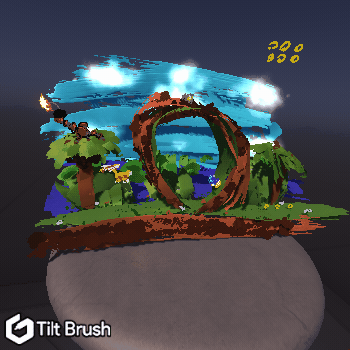
The same can be said for the way Valve's The Lab lets you visit exotic locations using VR postcards. I have never felt so much like I was somewhere else than I did when putting on some of those bubbles. It is impossible to explain, but standing in that photogrammetry stitched cave was truly like being teleported.
As great as those experiences are though, the one that had me at hello, was TiltBrush. A free game/experience bundled with the Vive and freely available on Steam, TiltBrush lets you paint in virtual reality. It might seem silly, or dull, but popping on some good music you can find yourself engaged for hours toiling away on your own digital world.
I am no artist, but even some of the environments, sculptures and creations I was able to put together leave me misty eyed with how in-depth you can get in their making. What fashion designers and real artists have been capable of is truly astounding.
360 degree digital artwork should very much be a new art form and I am really excited to see what comes of it. In the mean time, if you can try and experience out there for the Vive, TiltBrush is the one to play with.
But of course virtual reality can be a somewhat lonely place, especially if you are the only one of your friends who has one. Fortunately then, you can head into AltSpace VR. AltSpace is a number of freely accessible environments for people to hang out in virtual reality.
Better yet, it is hardware agnostic, so you can find yourself hob nobbing with HTC Vive users, Oculus Rift users and those with older developer headsets too. There are games to play together, Youtube videos to watch and there is even tabletop roleplaying at certain times and dates.
Altspace also just held its first live virtual reality stand-up comedy gig with Reggic Watts. There is a lot of scope for expanding this sort of content. I am really excited to go to a few gigs in VR in the near future.
Playing Oculus Games
You may be aware that there has been an ongoing debate in the VR community for the past few months about whether Oculus' hardware/store exclusivity with certain titles is a good thing or not. While I found it confusing in my own review of the Rift, since the quality was not as uniform as Oculus made out it would be, it has left Vive gamers out in the cold.
That is until the Revive driver came along. Although there has been some back and forth sparring between developers and Oculus in enabling and disabling this hack/mod that makes it possible to play Oculus games through Steam VR, I did finally get it working and had a play on a few games and experiences that were supposed to be only accessible on Oculus.
I will not get into comparison between the two headsets, and will not give full coverage of the games since they are not officially supported. That said, the fact that you have access to the entire Vive library of games and almost the entire Oculus library as well, gives the Vive even more content to play with and that is always a good thing.
A note on roomscale and Chaperone
As noted throughout this review, roomscale – the ability to walk around your space safely – is one of the biggest selling points of the Vive, along with its motion controllers, so it is worth addressing a few important aspects of it.
For starters, while I did use the minimum space for roomscale play (2m x 1.5m) it was perfectly adequate. I was able to play almost all games without any mishaps – only in Vanishing Realms did I accidentally hit the wall while trying to strike a nearby skeleton.
Job Simulator
That said, more space is certainly better. By having added room you can not only move around more, but the chaperone boundaries, the blue, translucent-grid that prevents you walking into the wall, retreat further, helping you stay immersed for longer.
Ideally, you would have the maximum space to play with, but if you do not, I would still say the Vive is a worthy buy. You can always tone down the chaperone opacity – though beware, as that did lead this relatively experienced VR user to crash into the wall once or twice.
Fortunately the Vive hardware is pretty sturdy.
What about nausea?
None. Not once during testing did I experience nausea. I do have quite sturdy VR legs and am not typically affected by motion sickness, but to give this some context, I have experienced it with the earlier Oculus Rift developer kits and also with the CV1.
Thanks to the ability to walk around scenes in VR, the excellent, near-perfect tracking and the motion controllers of the Vive, presence is assured in virtual reality and when all of that is combined with the new displays and lenses, there is little reason to fear feeling sick within an HTC Vive.
Camera, smartphone support
A couple of other features that I need to mention but would not really fit in anywhere else, are the front-facing camera and smartphone support.
The front-facing camera on the Vive can be used to give you a much more real chaperone system, whereby you can actually see your environment with a tron-like filter. It can also give you a direct feed when pulling up the menu (depending on preferences). That is handy for when someone outside of the VR world wants to chat to you, or you just want to reorientate yourself.
The smartphone functionality is a nice addition that can help reduce the distance you feel from the real world. Getting texts and calls in VR is easy enough after a quick link up, though you do need to re-pair your phone with the headset's bluetooth function every time you leave and return to VR which can be annoying.
The mic inside the headset is not great either.
Smartphone integration is far from perfect and is one of the weaker implementations of the Vive, but we know it was somewhat of a last minute addition, so it makes sense that it is not quite as polished. Perhaps as time goes on we will see some software updates continue to improve it.
At the end of my testing period with the Vive, as I look at it on my desk and consider how much I will use it now that I do not have to for work, I find myself in a bit of a love/hate relationship with it.
I have had some truly mind-blowing experiences with the Vive. I have slain skeletons and demons, gunned down drones, thrown knives at robots and spent hours painting fantastical landscapes and environments around me. The Vive has shown me things and let me do things that I have never done before and in many ways, never even considered before it came along.
But it is not perfect. This is still very much a first generation device. It has its quirks, it has its annoyances. The base stations sometimes do not wake up when they should, leaving you to unplug and plug them back in again. The headset slips from the sweet spot when you look down. Keeping an area clear for use in VR is a pain in the neck.
Most of the time though, it is completely worth it. Time and again I found myself coming out of a lengthy testing session, even when nonplussed about what I have played and found myself awed at how small my real world office is. I had just been stomping through Aperture's labs, exploring a forest in Fated or flying my hovercraft around a desert while I tried to gun down robots.
All within a 2m x 1.5m space.
The Vive is an absolutely amazing product and the roomscale tracking and locomotion combined with motion controls is a complete game changer. Make no mistake, this is the virtual reality that you envisioned as a child, or when you read Ready Player One.
It has a long way to go and after many hours of playing you can see the strings controlling the puppets, but as it stands now, the Vive is an amazing, fantastical and honestly life-changing product.
It is just very, very expensive. With perhaps 100 hours of play time on the Vive and its Vive Pre predecessor, I am still a long way from feeling like I have gotten my money's worth from the headset and its accessories. It will be a while until that sinks in I think.
But I will get there. This is not a technology that is going away and until StarVR comes out, until Oculus releases its Touch controllers, there is not much that can hold a candle to the Vive's experiences.
I want it to get better and I want a bigger house so I can have more room to explore the technology in, but I think for many people the Vive and perhaps even virtual reality in general, is going to be something that they do not really get to grips with until the generation two hardware starts arriving in a few years.
If you are a casual gamer, this is not a bit of hardware for you. If you are a hardcore gamer, I do not think it is really for you either. The Vive is for those early adopters who want to explore new types of gaming, new experiences and be part of the early days of VR so you can say, “I was there.”
KitGuru was there and we can tell you that the HTC Vive's virtual reality is stupendous, but think long and hard before buying one and better yet, try it yourself. You will not truly understand VR until you do, but be aware that if you fall in love, there will be some disappointments – it comes with the territory of early adoption.
But my god is it good.
At the time of writing, the cheapest place to buy the Vive in the UK is Curry's, which has it at £690. Stock is expected to arrive at the end of June. You might get one sooner ordering straight from HTC, but you will have to pay added postage costs.
Discuss on our Facebook page, over HERE.
Pros
- Room scale is hands down, the best VR experience you can have.
- Motion controllers make interaction in VR natural.
- Tracking is almost flawless with proper sensor placement.
- Chaperone gives you confidence to move around in VR.
- Headset is comfortable over long play sessions.
- Zero motion sickness throughout tens of hours of testing.
- Smartphone integration is a nice addition.
- Huge list of available content, though not all of it will offer longevity.
- New and wonderful experiences unavailable on any other medium.
- Access to Oculus content through Revive driver.
Cons
- Clearing space can be a pain, especially in smaller British homes – but it is worth it.
- Set up can be a bit fiddly, Steam VR still crashes.
- Lens contours can occasionally be seen in scenes with bright light sources.
- Headset weighting needs improvement.
- Crisp, bright screen makes pixels a little more obvious than the Rift.
- Visual sweet spot shifts off centre when looking down.
- Frame creaks occasionally when looking straight up.
KitGuru Says: The HTC Vive is a truly wondrous product that shows us what the future of virtual reality is going to be. There are plenty of games to play and the hardware works well for the most part, but just expect to eat into your kid's college fund before you have an adequate game library.
 KitGuru KitGuru.net – Tech News | Hardware News | Hardware Reviews | IOS | Mobile | Gaming | Graphics Cards
KitGuru KitGuru.net – Tech News | Hardware News | Hardware Reviews | IOS | Mobile | Gaming | Graphics Cards


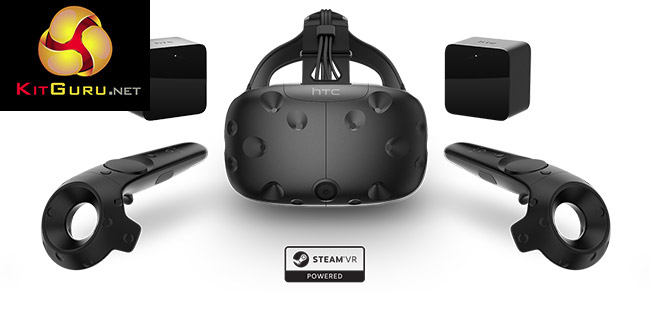
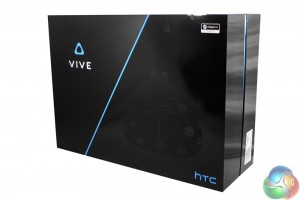
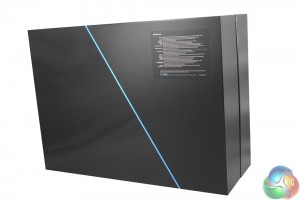
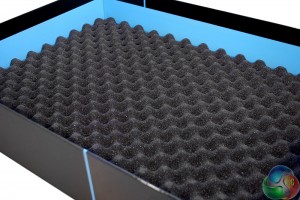
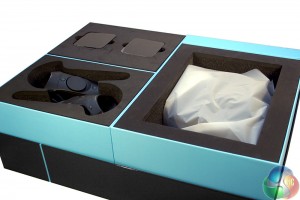
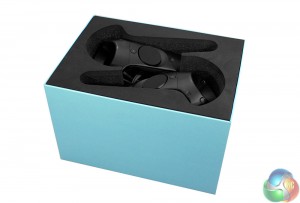

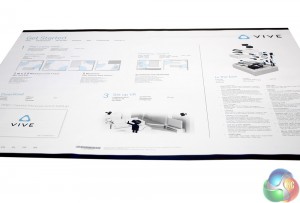
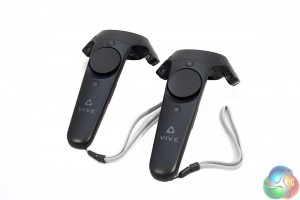
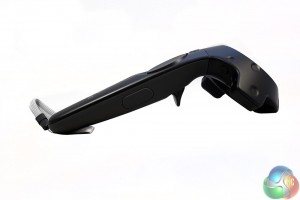
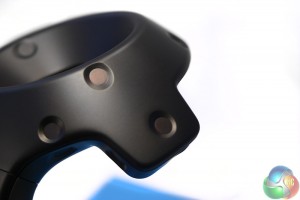
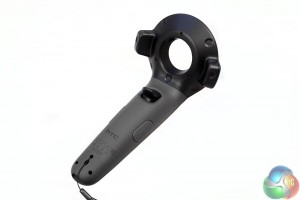
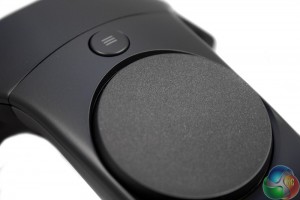
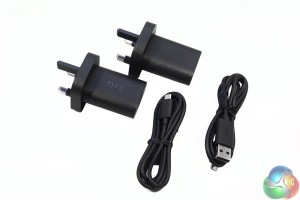
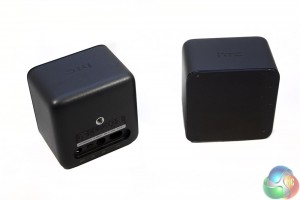
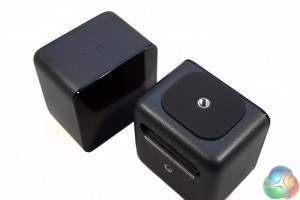
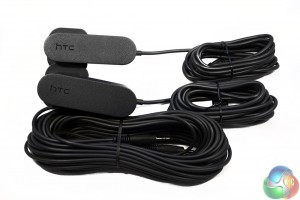
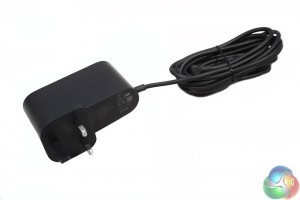
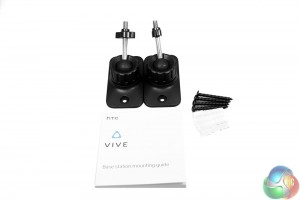
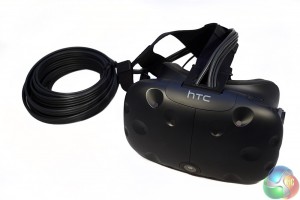
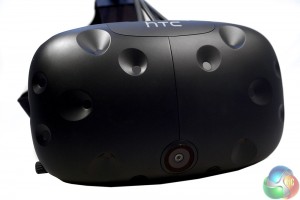
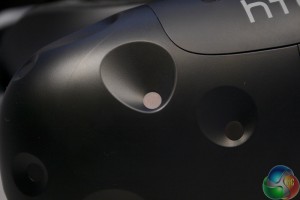
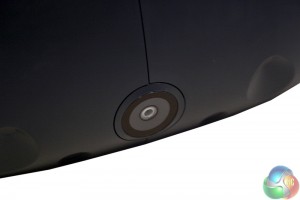
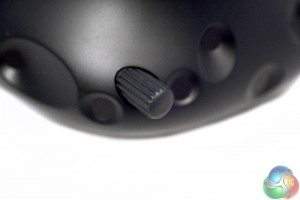
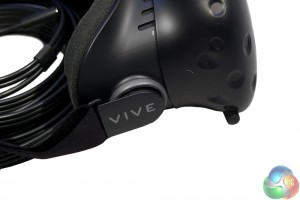
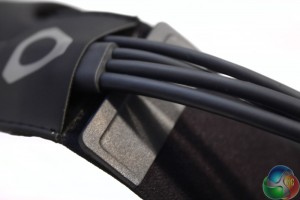
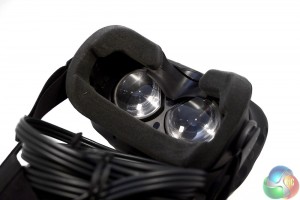
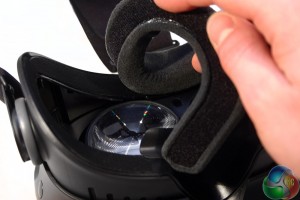
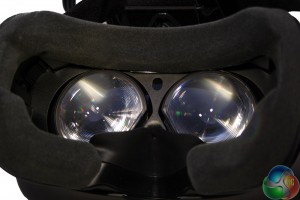
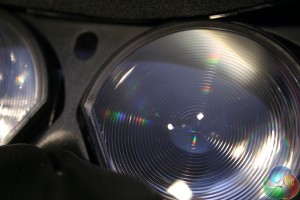
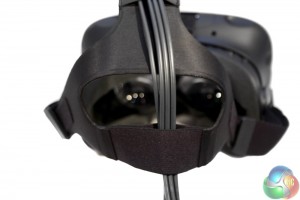
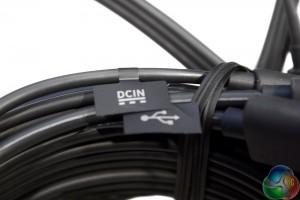
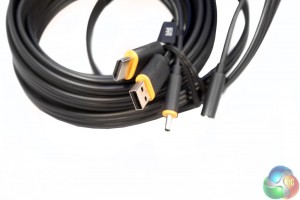
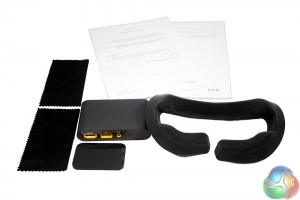
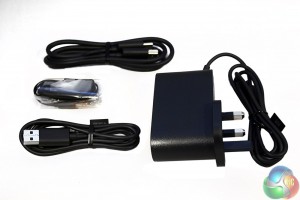
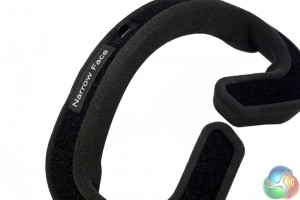
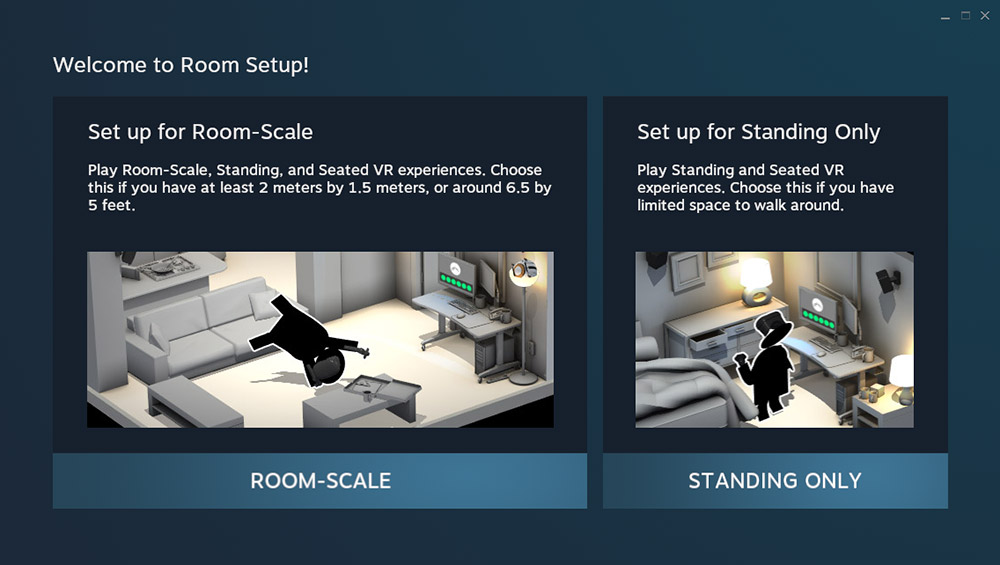
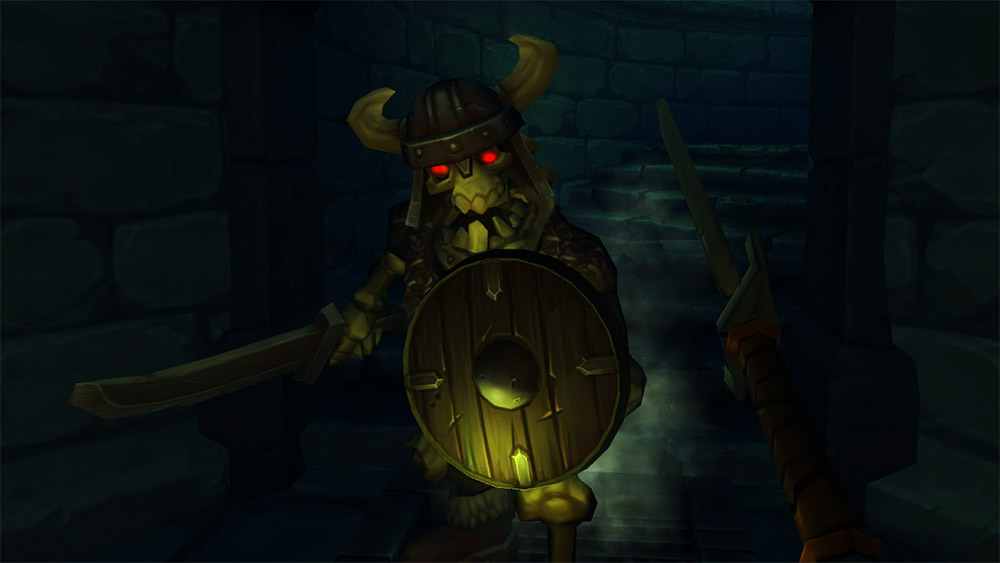
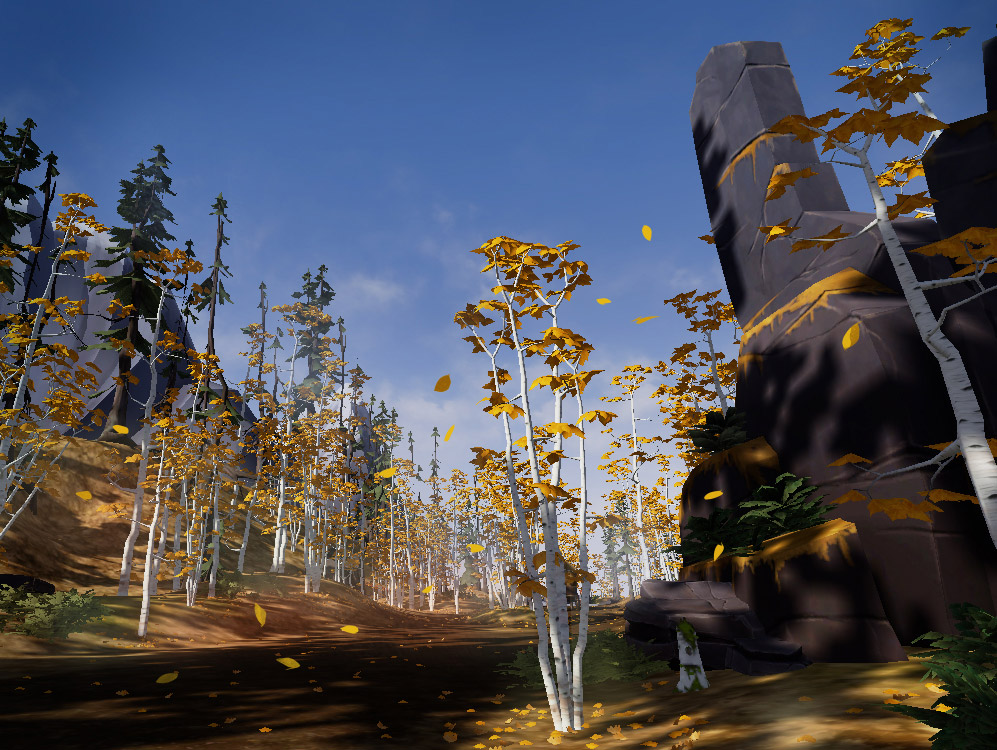
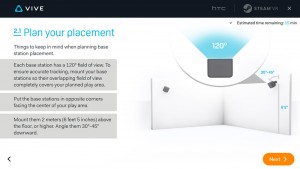
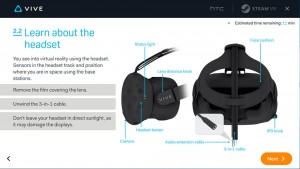
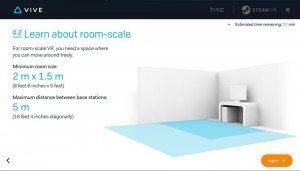
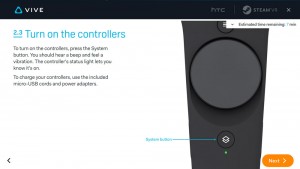
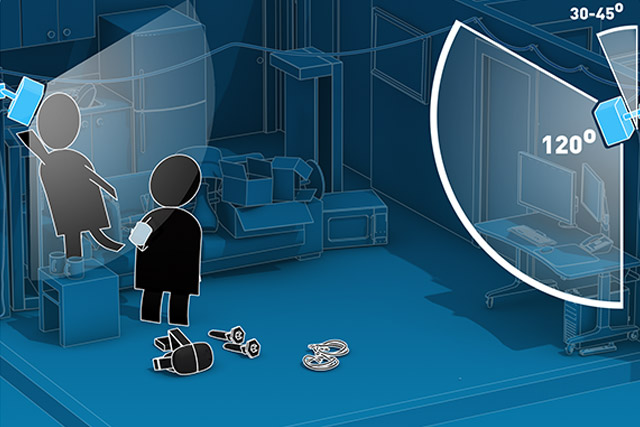

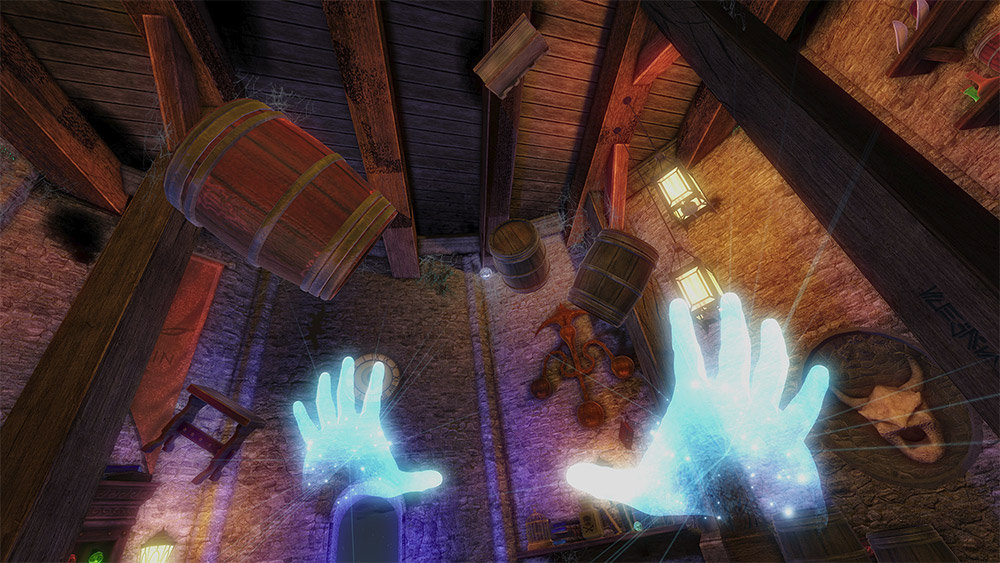
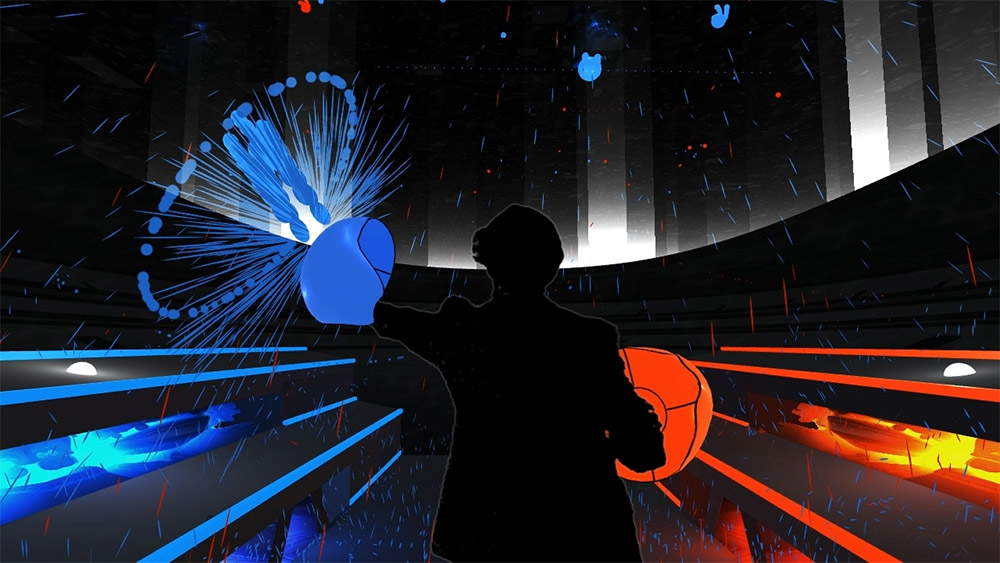
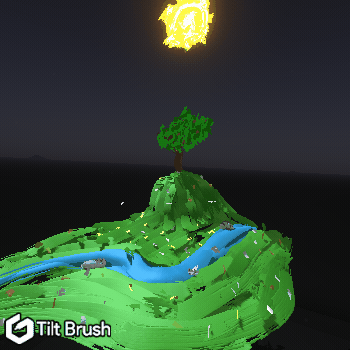
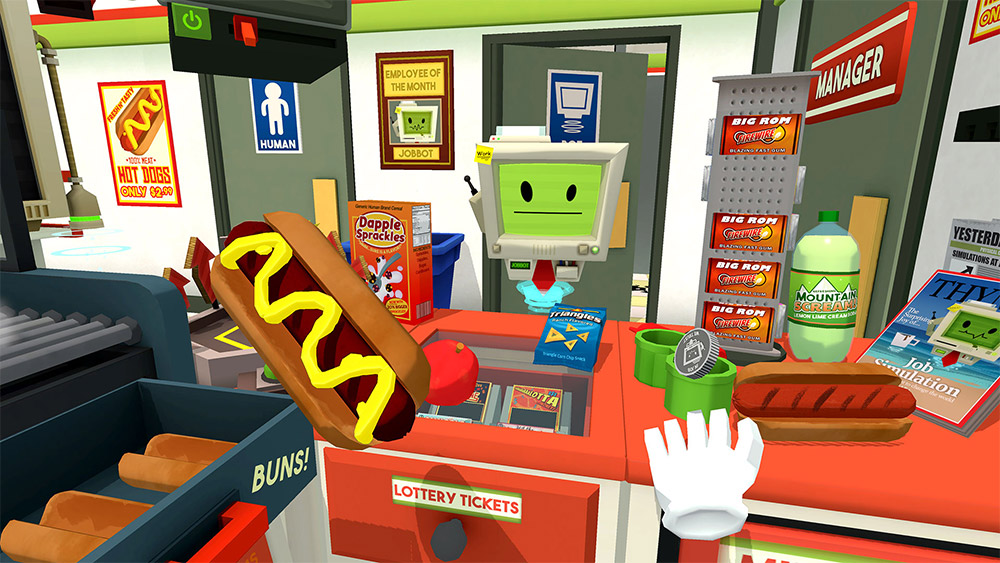

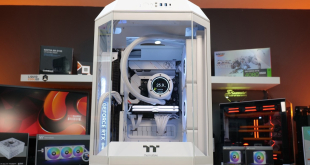
We’ll wait for this “other day” I guess…
Just picked my up from gamestop….long ride home…
StarVR…come on, i am going to wait for it. A lot better than this.